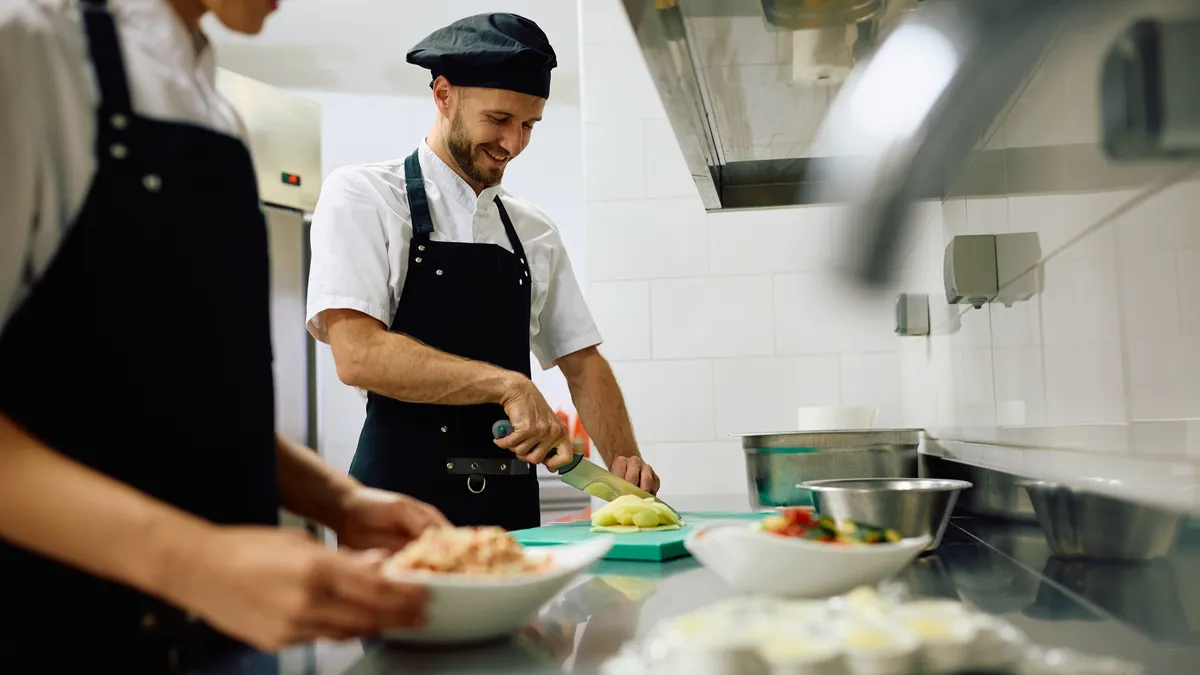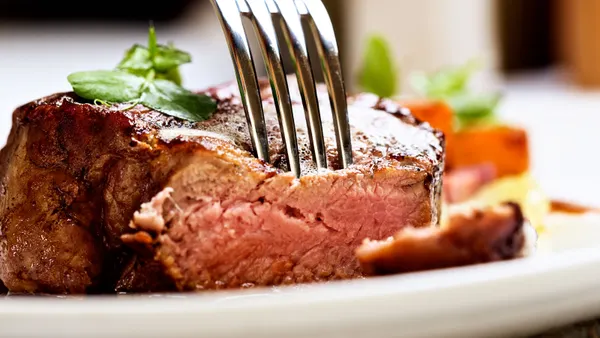In the restaurant business, an undeniable stigma has historically followed the use of pre-prepped or pre-portioned items. Chefs take pride in cooking everything from scratch (as they should!), and customer sentiment often equates pre-prepped restaurant foods with shortcuts at the expense of quality, despite the surge in demand for convenience food in retail. For many, the thought of convenience food products, specifically in restaurants, evokes rubbery, dense, or flavorless entrees.
In today’s food service climate, that mindset is not only outdated, it’s counterproductive.
Streamlined food solutions like sous-vide proteins, pre-formed patties, or even frozen fries enhance both customer experience and the restaurant’s bottom line. They’ve also come a long way in terms of taste, texture, and quality. When selected with care and implemented with thought, these products drive consistency, reduce food waste, and optimize labor.
The Enduring Labor Crisis
Kitchens everywhere are feeling the impacts of labor shortages. Hiring is hard; retention is even harder. Training new staff stretches already thin resources. As the job market continues to reshuffle, many food service operations are increasingly faced with serving high-quality dishes with inexperienced kitchen staff.
In these situations, streamlined food solutions prove their value. Pre-portioned proteins, multi-component dish solutions, or cook-from frozen entrees don’t require the same level of skill or oversight to prepare perfectly, and they often produce a more consistent result than cook-from-scratch. Armed with these tools, a less experienced line cook can produce a dish that looks and tastes exactly how it should, every time.
This also reduces errors like overcooked shrimp or sauce mix-ups, which lose money and erode customer trust. When execution is simplified, mistake rates drop and ticket times improve, leading to a rise in profit.
Real Cost Versus Sticker Price
Chasing the lowest-cost ingredients might make for a good budget spreadsheet, but it often underestimates the downstream costs of raw prep, including labor, spoilage, oil degradation, and yield loss.
Consider a case of raw, head-on, shell-on shrimp. It might look better on paper to conduct all prep in-house, but once you factor in labor hours, safety and allergen protocols, and yield loss from thawing, peeling and deveining, that case quickly becomes more expensive than a ready-to-cook alternative.
Food waste is also an overlooked cost center. According to Business Waste, the average restaurant wastes between 4% and 10% of all food inventory, and the majority of waste occurs during prep. Shrinkage from improper storage, spoilage from over prepping, or prep mistakes from inexperienced staff all add unforeseen costs.
Pre-prepped and pre-portioned solutions reduce this waste, and in doing so reduce overhead. A 2017 study cited by Restaurant Business found that for every dollar invested in reducing food waste, restaurants saved $14 in operational costs.
Curated Doesn’t Mean Compromised
Despite the apparent stigma around pre-prepped food solutions, some of the most widely accepted food products in restaurants are already streamlined: frozen fries, pre-breaded tenders, canned tomatoes. They’re trusted because they work. Yet, when it comes to higher-end items, some operators are still hesitant.
But the idea that higher-cost items are better prepped in-house is a fallacy, especially because a higher ingredient cost correlates to a higher fallout from normal human error. A perfectly portioned, pre-seared, or sous-vide choice isn’t just a labor saver, it’s a safeguard. It protects the integrity of the dish, ensures consistency across shifts and chefs, and reduces waste from prep errors.
Of course, not all pre-made products are created equal. The key is curation. A good solution maintains—or even elevates—quality while making execution quicker, easier and more consistent.
Pre-prepped and pre-portioned food solutions have come a long way. As demand for upscaled convenience in consumer-packaged goods grows alongside demand for quick, high-quality food service options, innovations in gourmet, convenient food solutions abound. Anything from sous-vide-ready proteins to pre-prepped seafood burgers have arisen, often with the best ingredients on the market.
Quality Doesn’t Have to Be Hand Chopped
In the modern food service landscape, smart restaurants are no longer choosing between quality and convenience—they can have both. The new age of high-quality, streamlined food solutions allow kitchens to operate with fewer people, more consistency, and better financial control.
For diners, that means shorter wait times and reliably delicious food. For operators, it means fewer mistakes, better margins, and a more scalable model.
“Pre-made” doesn’t mean lazy or low quality, it means strategic. The future of foodservice belongs to operators who can do more with less while still delivering a product that both they and their customers are happy with. With streamlined food solutions, that reality is in reach for more restaurants everywhere.










